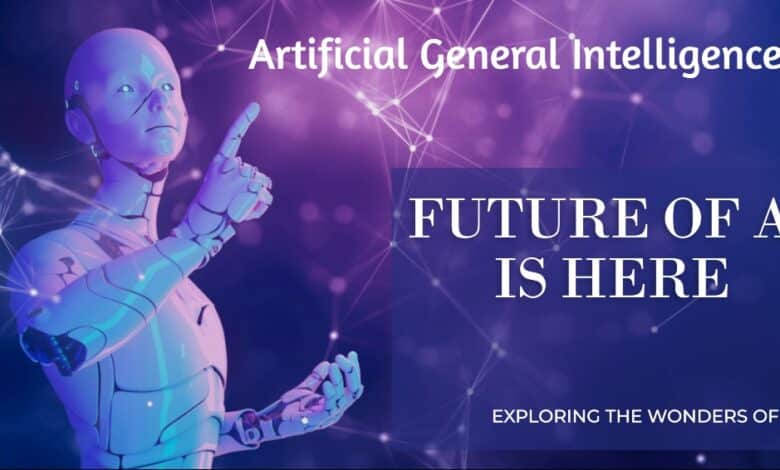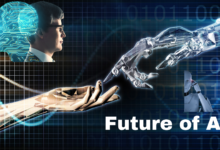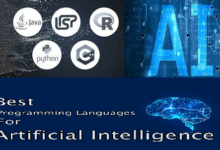Understanding AGI: A Journey into Artificial General Intelligence

Welcome to the fascinating world of artificial general intelligence! But before we dive in, let’s take a moment to understand what we’re dealing with.
Artificial intelligence, or AI, as it’s commonly known, is a field of computer science that aims to create machines that mimic human intelligence. This could be anything from recognizing speech, to learning, planning, problem-solving, and even perception.
Now, you might be wondering: What is Artificial General Intelligence? Well, AGI is a type of artificial intelligence that has the ability to understand, learn, and apply its intelligence to a wide range of tasks. It’s not limited to a specific domain. It’s ‘general’ because it can theoretically perform any intellectual task that a human being can.
In simple terms, if an AI is like a brilliant specialist who’s an expert in one field, an AGI is like a jack-of-all-trades, with knowledge spanning across different fields.
This book will take you on a journey through the intriguing world of AGI. We’ll start from the very basics, delve into its components, discuss its practical applications, and even look at what the future holds for AGI.
So, buckle up and get ready for an exciting journey into the world of Artificial General Intelligence!
History of AGI
The concept of machines that can think like humans has been around for a long time. The journey of AGI, however, began in the mid-20th century.
In the early days, scientists and researchers were optimistic about creating machines that could mimic human intelligence. They believed that it was only a matter of time before machines could perform any task that a human could do.
The term “Artificial General Intelligence” was coined much later, in the early 21st century, to differentiate from narrow AI systems that are designed to perform specific tasks.
Over the years, the field of AGI has seen many ups and downs. There have been periods of intense interest and funding, known as “AI summers”, followed by periods of disappointment and lack of progress, known as “AI winters”.
Despite these challenges, the quest for AGI has continued. Today, with advancements in technology and a better understanding of human intelligence, we are closer than ever to realizing the dream of AGI.
Understanding Intelligence
Intelligence is a complex trait that’s often associated with the ability to learn, reason, and solve problems. It’s what allows us to understand and interact with the world around us.
In humans, intelligence isn’t just about knowledge. It’s also about our ability to apply that knowledge in different situations, our emotional understanding, creativity, and even our physical responses.
Now, when we talk about Artificial General Intelligence, we’re referring to a machine’s ability to understand or learn any intellectual task that a human being can. It’s about creating machines that can perform tasks that normally require human intelligence.
But there’s a key difference. While human intelligence is influenced by both our biology and our experiences, AGI is based on algorithms and programming. It’s created, not born.
Components of AGI
Artificial General Intelligence is a complex field that involves several key components. Let’s take a closer look at them:
- Learning and Adaptation: This is the ability of AGI to learn from experience and adapt its responses based on new information. It’s about improving performance and making better decisions over time.
- Perception and Understanding: AGI needs to be able to perceive and understand the world around it. This could involve recognizing patterns, understanding natural language, or interpreting sensory data.
- Reasoning and Problem-Solving: This involves the ability to reason logically, solve complex problems, and make decisions. It’s about applying knowledge and understanding to new situations.
- Creativity: Last but not least, AGI should have the ability to generate new ideas, solutions, or concepts. It’s about thinking outside the box and coming up with innovative approaches.
These components work together to create a system that can understand, learn, and apply its intelligence to a wide range of tasks. But how are these components implemented in AGI? We’ll explore this in the next chapter, where we discuss AGI architectures. Stay tuned!
AGI Architectures
The architecture of an AGI system plays a crucial role in its functionality. It’s the underlying structure that defines how the system operates. Here are some common types of AGI architectures:
- Symbolic Architectures: These are based on the manipulation of symbols and rules. They’re designed to mimic human reasoning and problem-solving. An example of this is the Logic Theorist, the first AI program which was capable of proving mathematical theorems.
- Connectionist Architectures: These are inspired by the human brain and its network of neurons. They use artificial neural networks to process information. Deep learning, a popular AI technique, falls under this category.
- Hybrid Architectures: As the name suggests, these combine elements of both symbolic and connectionist architectures. The aim is to leverage the strengths of both approaches to create more robust and versatile AGI systems.
Each of these architectures has its strengths and weaknesses, and the choice of architecture can greatly influence the capabilities of the AGI system.
Challenges in AGI
The journey towards achieving Artificial General Intelligence is filled with numerous challenges. Let’s discuss some of them:
- Technical Challenges: Creating a machine that can perform any intellectual task that a human can do is no easy feat. It involves complex algorithms, vast amounts of data, and immense computational power.
- Ethical Challenges: As AGI systems become more intelligent and autonomous, they raise several ethical questions. For instance, who is responsible if an AGI system makes a mistake? How do we ensure that these systems are used for the benefit of all, and not for harmful purposes?
These challenges need to be addressed for us to progress in the field of AGI. In the next chapter, we’ll look at some practical applications of AGI and how it’s being used in the real world.
AGI in Practice
Artificial General Intelligence, while still largely theoretical, has some practical applications. Here are a few examples:
- Healthcare: AGI could be used to diagnose diseases, suggest treatments, and even predict health risks by analyzing a patient’s medical history and current health data.
- Education: AGI could provide personalized learning experiences, adapting the content based on the learner’s progress and understanding.
- Transportation: In the future, AGI could power self-driving cars, making them safer and more efficient.
- Scientific Research: AGI could help in solving complex scientific problems by analyzing vast amounts of data and identifying patterns that humans might miss.
These are just a few examples. The potential applications of AGI are vast and could revolutionize various sectors.
The Future of AGI
The future of Artificial General Intelligence is a topic of much speculation and debate. Here are some predictions:
- Technological Advancements: As technology continues to evolve, we can expect significant advancements in AGI. This could lead to the development of more sophisticated and capable AGI systems.
- Impact on Jobs: AGI has the potential to automate a wide range of tasks, which could lead to job displacement. However, it could also create new jobs that we can’t even imagine today.
- Regulation and Policy: As AGI becomes more prevalent, there will likely be increased regulation and policy development to ensure its safe and ethical use.
- Societal Changes: AGI could bring about major societal changes. It could transform industries, change the way we work, and even alter our daily lives.
While these predictions provide a glimpse into the potential future of AGI, it’s important to remember that the field is still in its early stages. The journey to AGI is a path of discovery, and the future is full of possibilities.
Seven Stages of AI
Artificial Intelligence is not a monolithic entity but evolves through various stages. Here are the seven stages of AI:
Handcrafted Knowledge:
This is the earliest stage where all the knowledge is hand-coded by humans. The AI systems at this stage are rule-based and perform specific tasks.
Statistical Learning:
At this stage, AI systems learn from data. They use statistical methods to infer patterns and make predictions.
Contextual Adaptation:
Here, AI systems start to understand context. They adapt their responses based on the situation or environment.
Autonomous Learning:
At this stage, AI systems can learn on their own without human intervention. They can explore different strategies and learn from their mistakes.
Self-Awareness:
This is the stage where AI systems have a sense of self. They understand their own state and can predict how their actions will change that state.
Safe and Beneficial:
At this stage, AI systems not only understand human values but also respect them. They ensure their actions are safe and beneficial to humans.
Human-Level AGI:
This is the final stage where AI systems can perform any intellectual task that a human being can. They understand, learn, and apply their intelligence to a wide range of tasks.
Each stage represents a significant advancement in AI capabilities, bringing us one step closer to achieving Artificial General Intelligence.
Remember, this is a general framework and the actual progression of AI might differ based on various factors. The journey to AGI is a path of discovery, and the future is full of possibilities.
Conclusion
We’ve come a long way on our journey into the world of Artificial General Intelligence. We started with a basic understanding of what AGI is and how it differs from other forms of AI. We delved into the history of AGI, explored the components that make up AGI, and looked at different AGI architectures.
We also discussed the challenges faced in the development of AGI, from technical to ethical issues. We saw how AGI is being used in practice today and speculated about what the future might hold for AGI.
As we conclude, it’s important to remember that the field of AGI is still evolving. There’s much we don’t know, and the path to true AGI is filled with challenges. But with every challenge comes an opportunity for learning and growth.
The journey into AGI is a journey into the unknown, filled with exciting possibilities and potential. As we continue to explore and understand AGI, we’re not just learning about machines – we’re learning about ourselves.







